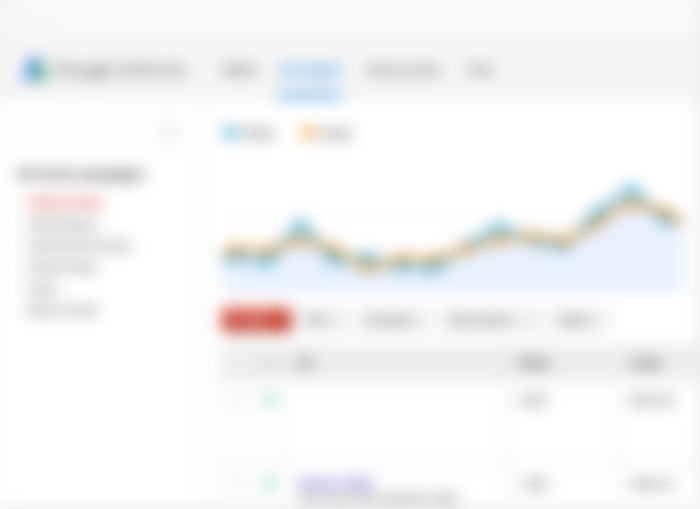The word data mining or data analytics has already created quite a buzz in the digital world. Data mining services have opened doors to a fantastic world of new possibilities. It has given growing businesses a perspective that was previously beyond the realm of their thoughts. Data mining services have now become the pillars of any new business. Data mining services, when combined with data analytics, can help you develop business intelligence, which is an excellent tool for any business.
What is Data Mining?
Our world is made up of raw, unstructured data. Data mining / Analytics is the process of finding relevant patterns from the set of raw data involving methods such as machine learning and human logic. It is the culmination of two fields, computer science, and statistics. The ultimate goal behind data mining and analytics is KDD “Knowledge discovery in databases.” Data mining services are in emerging demand. Many firms offer data mining services by deploying various methods such as manual data mining and automated data mining with Machine Learning and Artificial Intelligence.
We can use data mining services for customer experience, product research, or sales enablement in many ways. There are many ways data can help you improve ROI, be it via CRM cleaning, email data appending, and list building, among others. Thus, a lot of interdisciplinary branches bifurcate from data mining. However, data is the root of all these services.
How can Data Mining be used as a service?
Once you have gathered the mined data, i.e., once you have identified the raw data’s usage patterns, you can predict future market trends and analysis to help your business grow and prosper. Data mining services can help a company develop a deep insight into their businesses. Data can be used in accounting as well. You can devise your revenue model, do cost-cutting, devise a best-suited marketing plan for your business, and whatnot. Thus, data mining services can prove to be a convenient tool for any business.
Many organizations offer data mining as a service or as an end product (take, for example, DaddyLeads.com). DaddyLeads offers raw data for Analytics, buys it, and uses it as per your organization’s needs. Thousands of B2B websites provide these services against a fee. All these firms require data analysts, data scientists, data researchers to accomplish their goal of providing data mining as a service.
Data mining services isn’t a one-time service; it’s a continuous process. Every business needs data mining at different stages of operation. Data mining services can be used in a broad spectrum. It’s like sitting on the gold mine and refining gold, the gold which can be molded, wired, and modified in an infinite number of ways.
Data mining/analytics as a Career?

Source: Google images
Since every modern business these days utilizes data mining service one way or another, data mining professionals’ demand has increased manifolds. Every company wants to hire people who are good at data science. Thus, new job opportunities and new positions have been created to accommodate these professionals. Professions such as Data researcher, Data Scientist, Data Architect, Data admin, Data analyst, and manager are widely popular. So, let me elaborate on each of these roles and know what it demands.
Data Researcher:

A data researcher is a person who researches relevant data from a large pool of available data. He devises and deploys an algorithm with the help of which relevant data can be extracted. Here are the steps involved in data research:
Tracking Patterns: The most crucial step in data mining is to find patterns. Modern-day tools like Google Adwords can help you achieve this goal. Tracking patterns include identifying the peak points of a specific variable over some time.
For example, you might see a spike searching for holiday packages during the vacation period and a dip otherwise. Thus, the first step a Data researcher performs is tracking patterns in the raw data.

Classification: Classification is the next step after tracking the pattern. The available data is then classified based on demographics, nature, size, and current status. Classifying the data makes it more readable and relevant, which can now be used for various purposes. It is the role of the data researcher to classify the data into useful information.
Clustering: The classified data is then clustered into respective groups. For example, you can cluster a group of audience with similar income levels. Thus, a data researcher also performs the clustering of the data.
Data Analyst:
Data analyst translates the data into an understandable and readable format. It is the job of data analysts to pull out the meaning from the tabular data. Based on the analysis, they help companies take better decisions regarding their business. This can include suggesting new pricing models, solving monetary glitches, transportation costs, or something as simple as determining how many people work on weekends.
There are different types of analysts – operational analysts, marketing analysts, and financial analysts. Data analysts can help in all the departments of the company.
Data Scientist:
A data analyst with an enriched experience and rigorous domain knowledge is promoted to be a Data Scientist. A data scientist knows how to extract meaning from the data, clean the data, and append it according to the business need. A data scientist has a thorough grasp of business needs and statistics. Data scientists use machine learning tools, artificial intelligence to develop an insight into the business and help businesses make better decisions.
Data Architect:
As the name suggests, a data architect builds a framework of the collected and classified data with computer organization skills. They create a blueprint for creating, testing the database.
Thus, a data architect is a technical position given to engineers who have a thorough knowledge of developing frameworks, computer methodology, and organization. Several data architects work together to build a framework applied to all the data related operations and functions.
Data Admin:
Data admin is the person who controls the visibility of the mined data. It is the job of the admin to authorize permissions to view or modify the data. Sometimes, data admins reserve the right to modify the data to them based on its operation.
Their responsibilities also include monitoring the data and ensure the integrity of the data. They ensure that the data is error-free and fully functional. Data admins hold a crucial position in the company. They are entrusted with considerable responsibility for managing the company’s most important possession: data.
Bottom Line:
As you must have understood by now, mining services have created fantastic career opportunities. Apart from these professionals’ needs, data mining services have opened a new vertical for starting fresh businesses.


